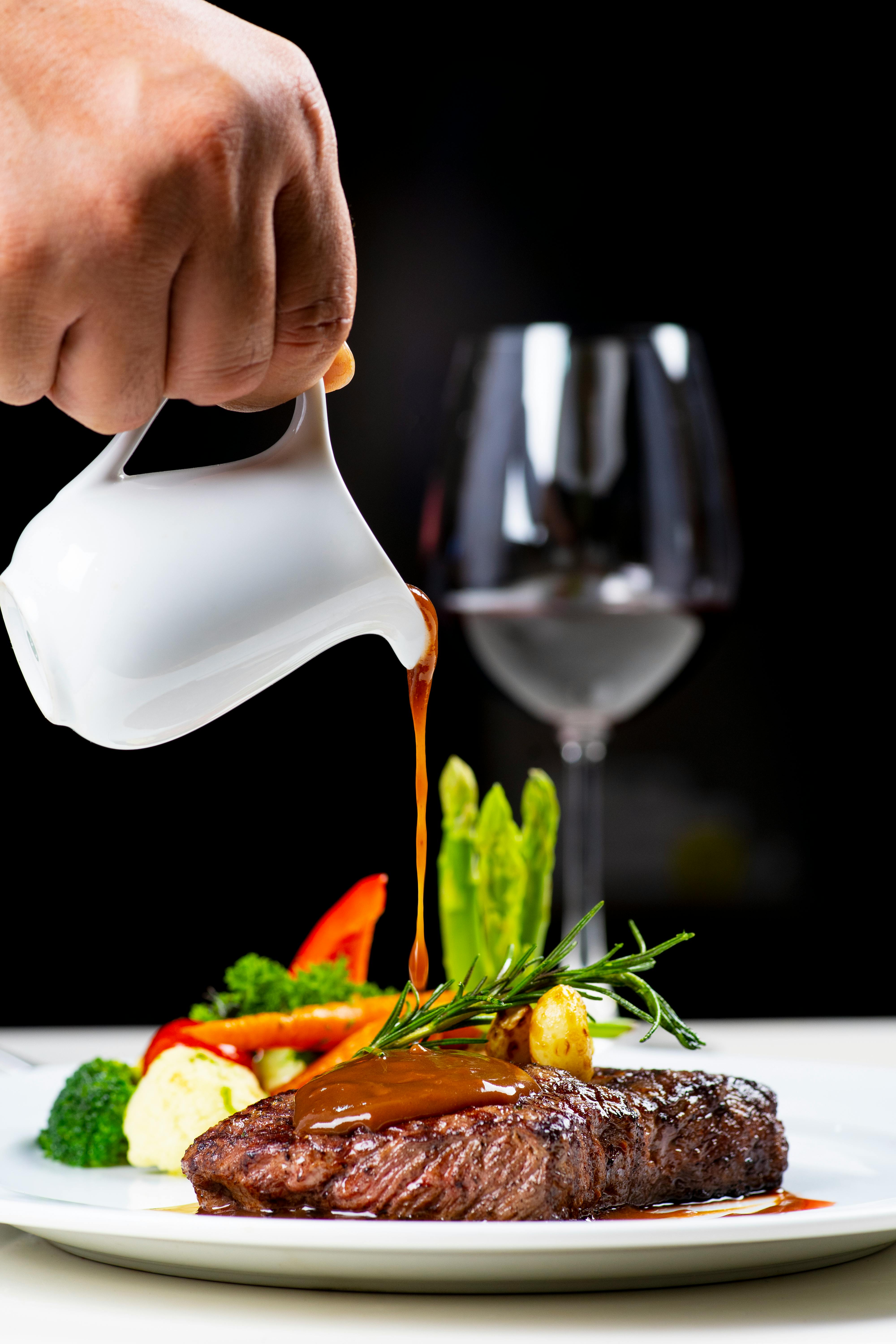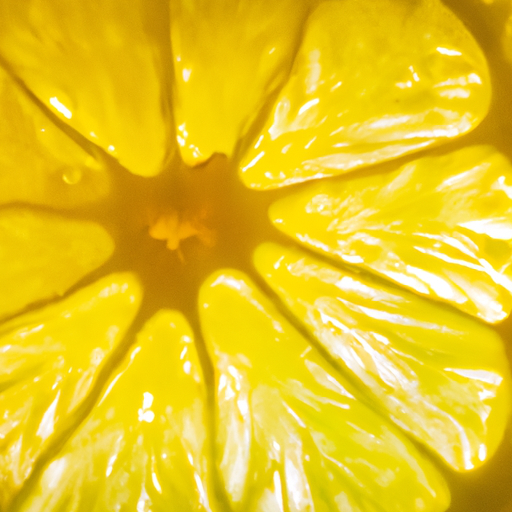Imagine transforming your everyday dishes into vibrant culinary masterpieces. With just a squeeze of a lemon or a splash of lime, you can add a burst of brightness and elevate the flavors of your favorite recipes. Discover the secrets to cooking with citrus and unlock a world of tangy, zesty, and refreshing possibilities. From enhancing the delicate flavors of seafood to balancing the richness of creamy desserts, this article will guide you through the art of incorporating citrus into your cooking repertoire. Get ready to infuse your dishes with a touch of citrus magic and become the star of your kitchen!

Section 1: The Versatility of Citrus
Understanding the Different Types of Citrus Fruits
Citrus fruits come in various types, each with its own unique characteristics and flavors. From tangy lemons to juicy oranges and zesty limes, understanding the differences between these citrus fruits can help you choose the best ones for your culinary creations.
Exploring the Flavors and Aromas of Citrus
Citrus fruits are known for their refreshing flavors and vibrant aromas. The tanginess of lemons, the sweetness of oranges, and the tartness of grapefruits can add depth and complexity to your dishes. By incorporating citrus into your cooking, you can elevate the taste of your meals and awaken your taste buds.
Benefits of Cooking with Citrus
Cooking with citrus offers numerous benefits beyond just adding flavor. Citrus fruits are packed with vitamin C, which can boost your immune system and provide antioxidant benefits. They also contain essential oils that can improve digestion and promote overall well-being. By incorporating citrus into your cooking, you can enjoy health benefits while adding a burst of flavor to your dishes.
Tips for Choosing and Storing Citrus Fruits
To ensure you select the best citrus fruits for your recipes, consider a few tips. Look for fruits that are firm and heavy for their size, as these tend to be juicier. Avoid fruits with blemishes or soft spots. When storing citrus, keep them at room temperature or in the refrigerator, depending on your preference. Citrus fruits can last longer when stored properly, allowing you to enjoy them at peak freshness.
Section 2: Enhancing Flavors with Citrus Zest
What is Citrus Zest and How to Extract it
Citrus zest refers to the outer layer of the fruit’s peel, which contains concentrated essential oils that pack a punch of flavor. To extract citrus zest, use a microplane or grater to gently scrape the colored portion of the peel. Be careful not to include the bitter white pith beneath the zest.
Various Ways to Use Citrus Zest in Cooking
Citrus zest can be used in numerous ways to enhance the flavor of your dishes. Sprinkle it on top of salads, pasta, and roasted vegetables for a burst of citrusy aroma. Mix it into marinades, dressings, and sauces to add depth and complexity. Incorporate it into baked goods, such as cookies and cakes, for a zesty twist. The possibilities are endless when it comes to using citrus zest in your recipes.
Pairing Citrus Zest with Specific Ingredients
Different citrus zest pairs well with specific ingredients, creating harmonious flavor combinations. For example, lemon zest complements fish and seafood dishes, while lime zest adds a vibrant kick to Mexican-inspired cuisine. Orange zest pairs beautifully with chocolate, and grapefruit zest adds tanginess to salads. Experiment with different pairings to discover your favorite flavor combinations.

Section 3: Adding Tang with Citrus Juice
Extracting Juice from Citrus Fruits
Extracting citrus juice is a simple process that can be done by hand or with the help of a juicer. For maximum juice yield, roll the fruit on a countertop before slicing it open. Use a citrus reamer or juicer to extract the juice. Alternatively, the juice can be squeezed out by hand by applying pressure to the fruit while rotating it.
Using Citrus Juice as a Marinade
Citrus juice makes an excellent marinade due to its acidity and flavor. The acidity of citrus juice helps to tenderize meat and seafood while infusing it with a bright tang. Marinate poultry, fish, or vegetables in a mixture of citrus juice, herbs, and spices for a burst of flavor and moistness.
Using Citrus Juice in Dressings and Sauces
Citrus juice can also be used in dressings and sauces to add a refreshing zing. Combine citrus juice with olive oil, vinegar, honey, and herbs to create a vibrant salad dressing. Add citrus juice to creamy sauces, such as aioli or hollandaise, to cut through richness and provide balance. Get creative with different combinations to find your perfect dressing or sauce.
Section 4: Infusing Dishes with Citrus Flavors
Methods of Infusing Citrus Flavors into Oils and Vinegars
Infusing oils and vinegars with citrus flavors is a simple way to add a burst of citrus to your dishes. Start by heating the oil or vinegar gently on the stove. Add strips of citrus zest, along with herbs or spices, and let it simmer on low heat. Once the flavors have infused, strain the oil or vinegar and use it to dress salads, drizzle over roasted vegetables, or incorporate into marinades and sauces.
Creating Citrus-Infused Salts and Sugars
Another way to infuse citrus flavors is by making citrus-infused salts and sugars. Simply mix coarse salt or granulated sugar with citrus zest and let it sit for a few days to allow the flavors to meld. Use citrus-infused salts to season meats, seafood, or sprinkle over roasted vegetables. Citrus-infused sugars can add a delightful twist to baked goods, desserts, or even to rim cocktail glasses.
Using Citrus Zest and Juice in Baking
Citrus zest and juice can add brightness and tang to your baked goods. Incorporate citrus zest in cake batters, cookie doughs, or pastry fillings to impart a refreshing aroma. Citrus juice can be used to flavor glazes, frostings, or fillings. The natural acidity of citrus helps activate leavening agents and adds a burst of flavor that can take your baked goods to the next level.
Incorporating Citrus into Desserts and Sweets
Citrus fruits are a perfect addition to desserts and sweets, as they add a refreshing element that balances the sweetness. From citrus-infused custards to tangy sorbets and citrus-filled tarts, there are endless possibilities to explore. Citrus can brighten up any dessert, providing a burst of flavor and an enticing aroma that will leave you and your guests coming back for more.

Section 5: Balancing Acidity in Savory Dishes
Understanding Citrus’ Role in Balancing Flavors
The acidic nature of citrus fruits plays a crucial role in balancing flavors in savory dishes. The tanginess of citrus cuts through rich and fatty ingredients, providing a refreshing and harmonious balance. By adding citrus to your savory creations, you can elevate the taste, brighten the dish, and create a well-rounded flavor profile.
Using Citrus to Enhance Seafood and Fish Dishes
Citrus and seafood are a match made in culinary heaven. The acidity of citrus complements the delicate flavors of fish and seafood, enhancing the taste without overpowering it. Drizzle fresh citrus juice over grilled fish, squeeze lemon or lime over ceviche, or create a citrus-based marinade for shrimp. The result will be a burst of freshness that brings out the best in these oceanic delights.
Incorporating Citrus into Poultry and Meat Recipes
Citrus can also elevate the flavors of poultry and meat dishes. Whether you’re roasting a chicken, pan-searing a steak, or marinating pork chops, citrus can add depth and brightness to your preparations. Add a squeeze of lemon or orange juice to your poultry or meat dishes during cooking or use citrus zest in dry rubs for an extra layer of flavor.
Adding Citrus to Vegetable and Salad Preparations
Vegetables and salads can benefit from the addition of citrus, as it brings a refreshing element and balances out the earthy flavors. Toss roasted vegetables with citrus vinaigrette for a zesty twist or drizzle citrus juice over sautéed greens. Citrus segments can also be added to salads for a burst of juicy goodness. Experiment with different combinations to create vibrant and flavorful vegetable dishes.
Experimenting with Citrus in International Cuisine
Citrus is a versatile ingredient that can be found in various international cuisines. From Mediterranean dishes like Moroccan tagines and Greek salads to Mexican-inspired salsas and Asian stir-fries, citrus adds a tangy dimension that complements the spices and flavors of different cultures. Explore the culinary traditions of different regions and incorporate citrus to create unique and delicious dishes.
Section 6: Citrus as a Natural Tenderizer
How Citrus Helps in Tenderizing Meat
The natural acidity of citrus fruits can act as a tenderizer for meat. The acids in citrus juice break down the connective tissues, making the meat more tender and juicy. By incorporating citrus into your marinade or cooking process, you can achieve succulent and flavorful results.
Marinating Meat with Citrus for Tender and Juicy Results
Marinating meat with citrus is a great way to infuse flavor and tenderize the protein. The acid in citrus juice helps to break down tough fibers, resulting in more tender and flavorful meat. Combine citrus juice, herbs, spices, and oil to create a marinade and let the meat marinate for a few hours or overnight. This technique works well with tougher cuts of meat, such as flank steak or chicken breasts.
Using Citrus as a Meat Tenderizer in Slow Cooking
Citrus can also be utilized as a meat tenderizer when slow cooking. The low, slow cooking process allows the enzymes in the citrus juice to break down the proteins, resulting in beautifully tender meat. Add citrus juice, along with other flavors and seasonings, to your slow cooker and let it work its magic. The end result will be tender, melt-in-your-mouth meat that is bursting with flavor.
Section 7: Creating Refreshing Citrus Beverages
Citrus-Infused Water and Lemonade Variations
To quench your thirst and enjoy the refreshing flavors of citrus, consider citrus-infused water and lemonade variations. Add slices of citrus fruits, such as lemons, limes, or oranges, to a pitcher of water and let it infuse for a few hours. This will result in a subtly flavored and hydrating beverage. For a bolder kick, make homemade lemonade with freshly squeezed citrus juice, sugar, and water.
Making Citrus Cocktails and Mocktails
Citrus is a staple in the world of cocktails and mocktails, as it adds brightness and complexity to these beverages. From classic margaritas and mojitos to innovative citrus-based concoctions, the possibilities are endless. Combine citrus juice, spirits or non-alcoholic mixers, and a touch of sweetness to create refreshing and vibrant drinks that will impress your guests.
Exploring Citrus in Hot and Cold Tea Recipes
Citrus can also be incorporated into hot and cold tea recipes to create delightful beverage options. Add slices of citrus to your iced tea, either by infusing them in the cold water or adding them as garnish. The citrus brightness will add a refreshing note to your tea. For a warm and soothing option, steep citrus peels or slices in hot water along with your favorite tea leaves or herbal blends. The result will be a fragrant and comforting cup of tea with a citrus twist.
Section 8: Citrus in Ethnic Cuisines
The Role of Citrus in Mediterranean Cuisine
Citrus fruits, such as lemons and oranges, play a prominent role in Mediterranean cuisine. From Greek salads drizzled with lemon juice and olive oil to Moroccan tagines featuring preserved lemons, citrus adds a tangy and aromatic element to these dishes. Incorporate citrus into your Mediterranean-inspired meals to bring out the authentic flavors of this region.
Utilizing Citrus in Mexican and Latin American Dishes
Citrus is a key ingredient in Mexican and Latin American cuisines, adding brightness and depth to traditional dishes. Lime juice is a staple in salsas, guacamole, and marinades. Orange juice is often used in braised meats and sauces. Experiment with citrus in your Mexican and Latin American recipes to experience the vibrant and zesty flavors of these cuisines.
Citrus in Asian Cooking: From Tangy Stir-Fries to Zesty Curries
Asian cooking is known for its bold and complex flavors, and citrus is often used to add that necessary tang and brightness. Lime juice is commonly used in Thai curries and dressings. Lemon juice is a popular ingredient in Chinese stir-fries and marinades. The citrus flavors bring balance and harmony to the intricate flavors of Asian cuisine. Try incorporating citrus into your Asian-inspired dishes for an extra dimension of flavor.
Section 9: Precautions and Considerations
Avoiding Bitterness: Properly Zesting Citrus
When zesting citrus, it’s important to avoid the bitter white pith beneath the colored outer layer. Use a microplane or grater to gently scrape off the colored portion of the peel, being careful not to include the pith. The pith can impart bitterness to your dishes, so it’s best to remove it when extracting zest.
Handling Citrus Juice and Its Effects on Other Ingredients
Citrus juice can have a profound effect on other ingredients, especially when used in large quantities or over a long period of time. The acidity of citrus juice can alter the texture and consistency of certain ingredients, such as dairy or eggs. When adding citrus juice to a recipe, consider the reaction it may have on other ingredients and adjust accordingly.
Potential Allergic Reactions to Citrus
While citrus fruits are generally safe for consumption, some individuals may have allergies or sensitivities to citrus. Common symptoms of citrus allergies include itching, swelling, hives, or an upset stomach. If you suspect you have an allergy to citrus, it’s best to consult a healthcare professional for proper diagnosis and guidance.
Dealing with Citrus Sensitivity
Some individuals may experience sensitivity to citrus fruits, even without an official allergy. If you notice discomfort or digestive issues after consuming citrus, it’s best to limit or avoid citrus altogether. Experiment with alternative ingredients to achieve similar flavors and aromas in your dishes.
Section 10: Citrus-Inspired Recipes
Citrus-Marinated Grilled Chicken
Marinate chicken breasts in a mixture of citrus juice, garlic, herbs, and olive oil for at least 30 minutes. Grill the chicken until cooked through and serve with a side of roasted vegetables or a citrus-infused salad for a light and flavorful meal.
Lemon-Garlic Shrimp Pasta
Sauté shrimp in a pan with garlic, olive oil, lemon zest, and lemon juice. Toss the cooked shrimp with al dente pasta, fresh herbs, and Parmesan cheese for a tangy and satisfying pasta dish.
Orange-Glazed Salmon
In a small saucepan, combine orange juice, honey, soy sauce, and ginger. Simmer until the glaze thickens slightly. Brush the glaze over salmon fillets and bake until the fish flakes easily. Serve with steamed rice and roasted asparagus for a citrus-infused dinner.
Citrus Salad with Avocado and Feta
In a large bowl, combine mixed greens, segments of citrus fruits, diced avocado, crumbled feta cheese, and toasted nuts. Toss with a citrus vinaigrette made with lemon juice, Dijon mustard, honey, and olive oil. The result is a refreshing and vibrant salad that is packed with flavor and texture.
Key Lime Pie
For a classic citrus dessert, make a key lime pie with freshly squeezed lime juice, sweetened condensed milk, and a graham cracker crust. Garnish with whipped cream and lime zest for a tangy and creamy finale to your citrus-infused meal.
Incorporating citrus into your cooking is a wonderful way to brighten and elevate your dishes. From the vibrant flavors of zest and juice to the natural tenderizing properties of citrus, there are endless possibilities to explore in the world of citrus cuisine. So grab some lemons, oranges, or limes, and let your culinary adventures begin! Happy cooking!

